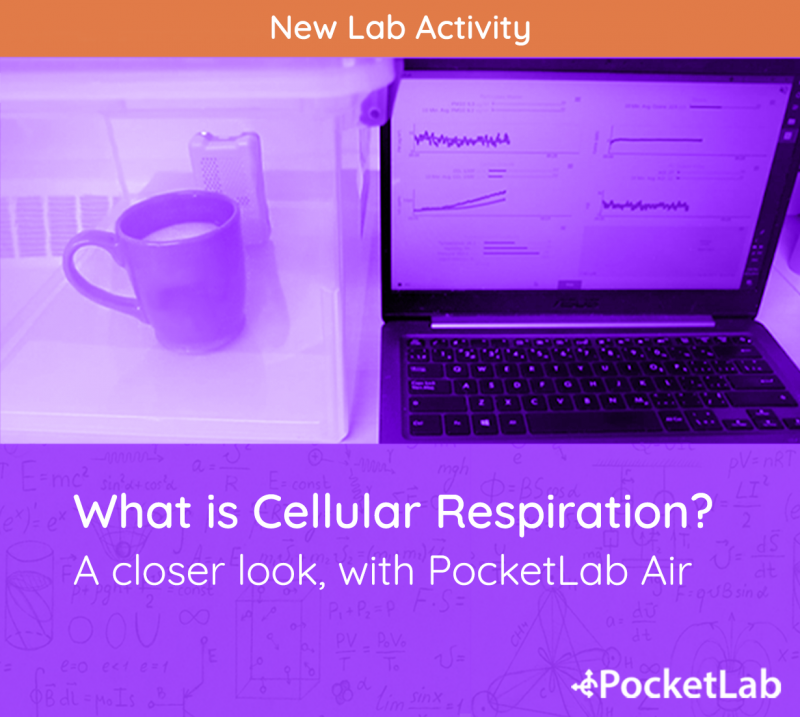As you’re reading this, your body is doing a great many things; all controlled by your autonomic nervous systems. One of these processes is you are breathing in and breathing out every couple of seconds; taking in everyday air and breathing out air that is slightly warmer, humid, and most interestingly, has a higher concentration of carbon dioxide. This is due to the process of cellular respiration as seen below in which sugar and oxygen are turned into carbon dioxide and water alongside the useful energy molecule ATP.
C6H12O6 + 6O2(g) → 6CO2(g) + 6H2O(g) + ATP (Energy)
Human Cellular Respiration Experiment
With the use of PocketLab Air, this is very simple to show to students. It is almost natural when you first get your PocketLab Air to try breathing on it and to see what happens. In this case, the carbon dioxide levels will max out and particulate matter, temperature, relative humidity, and pressure will rise. There is example data of this below.
Human Cellular Respiration Experiment within a Sealed Container
Alternatively, you can perform the same experiment within a sealed vessel in order to not max the carbon dioxide sensor which produces a carbon dioxide graph like the one below. You can even use the volume of the box and the concentration of carbon dioxide in ppm to find how much carbon dioxide you breathed out.
Cellular Respiration of Yeast Experiment
But there are many other good examples of cellular respiration out there. Another easy experiment is measuring the effect yeast have on their environment which can be connected to allowing baked goods to rise.
Materials:
- Yeast
- Cup
- Spoon
- water
- Sealable container (Sterilite gasket boxes are relatively inexpensive and have an airtight seal)
Simply fill a cup ¾ full with lukewarm water, a tablespoon of sugar, and a tablespoon of yeast and then stir. Place this within a sealed container and then wait and watch the carbon dioxide levels, relative humidity, and temperature rise as the yeast starts to perform cellular respiration (temperature increase is largely not from cellular respiration but other biological activities). A video of the experiment and example data can be found below. For MS-LS2-3 this experiment can be used to show an open system as the cup and a closed system as the container.
In reality, cellular respiration is an organism’s controlled combustion of glucose with the energy limited to the production of ATP. Burning wood (mostly cellulose, which is chains of glucose) or sugar will both produce just as much carbon dioxide/reaction but the energy goes to heat, sound, and light rather than a useful energy molecule such as ATP. If you are interested in visualizing the burning of wood check out Sensors for Forest Fires Experiment.


